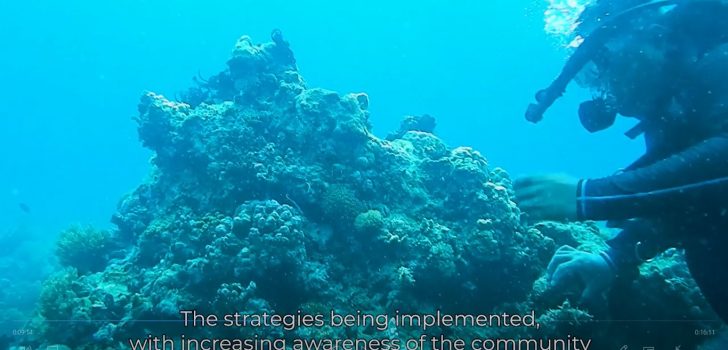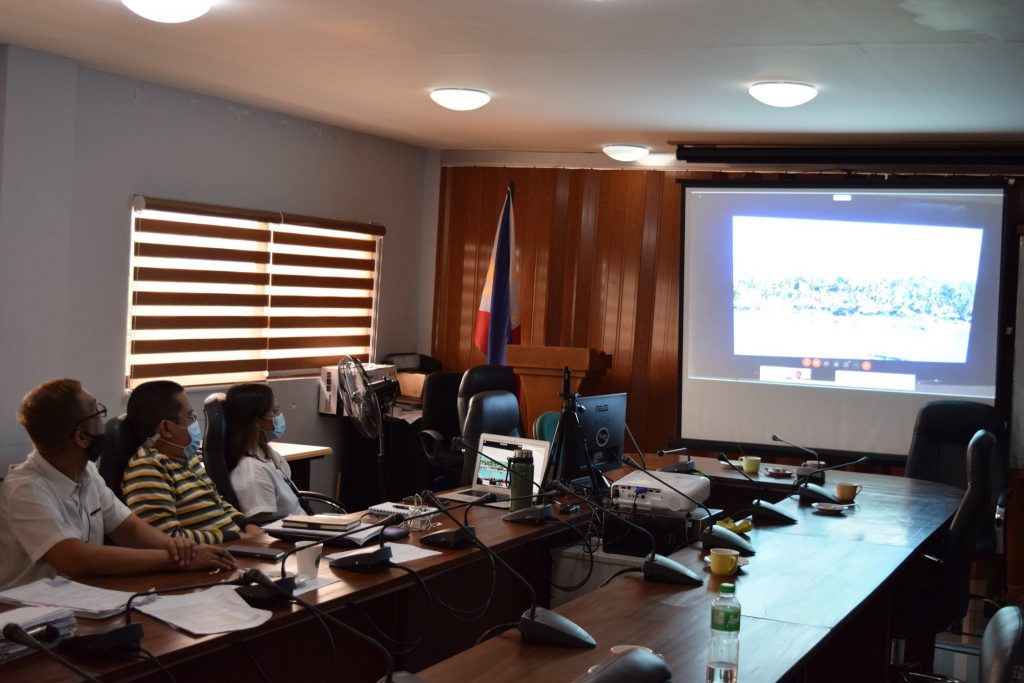
Bahurang Silag MPA continues to improve as per World Bank team
The Philippine Rural Development Project (PRDP) has successfully conducted a site visit of the marine protected area (MPA) in Agdangan, Quezon via video presentation and teleconferencing for the Tenth World Bank Implementation Support Mission.
Even the country is still in the midst of community quarantine and travel restrictions due to the COVID-19 pandemic, the PRDP was still able to present the Global Environment Facility (GEF)-supported site in Agdangan, Quezon to the World Bank (WB) team through an audiovisual presentation.
Bahurag Silag is a 24-hectare fish sanctuary established in 1997 by a municipal ordinance. However, the sanctuary still continues to experience degradation through the conduct of destructive fishing methods inside the area. In a Participatory Resource Appraisal – Resource and Social Assessment (PRA-RSA), coral rubble and debris were discovered in the reserve which are evidence of dynamite fishing.
Also, the absence of instruments to determine the exact location of the sanctuary in 1997 was viewed as one of the contributors to the deterioration in the condition of the reserve.
Through the support and assistance from the PRDP to rehabilitate the Bahurang Silag Fish Sanctuary, which has a total cost of P2.5 million, the area now continuously recovers.
In 2016, the PRA-RSA for the coral cover registered live hard coral at 35% while dead corals were recorded at 40%. Two years later, during the conduct of underwater Resource Ecosystems Assessment, hard corals increased by 3.49% while dead corals decreased by 18.47%. Live soft corals also spiked to 15.3% as compared to less than 6% from the previous survey.
Jim Hancock, Food and Agriculture Organization Natural Resources Management Officer and Bank’s consultant, asked Mayor Rhadam Aguilar of Agdangan the reasons for the marked improvement of the area.
“The increased visibility of the patrolling unit, the impactful leadership of the municipal agricultural office, and community participation were the main reasons why the fish sanctuary continues to improve and why this administration is fully behind this initiative,” Mayor Aguilar responded.
Hancock also lauded the team for providing a good overview of the subproject as well as for soliciting in-depth interviews from the partners on the ground.
In terms of patrolling, the bantay-dagat are now better equipped to protect the fish sanctuary and the municipal waters of Agdangan as a whole.
Goods procured for the subproject were SCUBA diving gears, patrol boats, demarcation materials, and floating lifeguards. Training and seminars were also funded to ensure proper management and protection of the area.
“We use the patrol boat to conduct seaborne operation which allows us to apprehend offenders and file cases for violating the Municipal Fisheries Ordinance. Some of the confiscated materials [during the operation] include fishing nets and boats used in Buli-Buli (Danish Seine), compressors, yellowfin tuna fishing equipment, among others. Aside from our regular patrolling, whenever a concerned resident reports that there are individuals who use illegal fishing methods in a certain area, we immediately go to the location and apprehend these violators,” Nonieto Quin, President of Bantay-Dagat ng Agdangan, expressed.
“Agdangan extends help to other LGUs along Tayabas Bay to conduct ‘SCUBAsurero’ (underwater garbage collection) activities as the quality of their municipal waters also affect ours. To fully protect the sanctuary, the community members drive away unauthorized persons entering the MPA. More importantly, if you ask our fishermen, they can attest to the increase in catch,” Joemar Salagubang, Agdangan Municipal Agriculturist, added.
In addition to the rehabilitation subproject, two seaweed microenterprises are currently being operated by two-clustered proponent groups which benefit 61 fisherfolks coming from all coastal barangays in Agdangan.
Seaweeds production materials worth P1.01 million were given to the first cluster while P1.32 million for the second cluster. The materials procured included production tools, propagules, moisture meter, and weighing scale. Hands-on training and seminars were also conducted by the Project and LGU and participated by the beneficiaries of the microenterprise subprojects.
“Last year we were able to profit P100,000 from the 10,000 kilograms of fresh seaweeds that we have planted. Planting seaweeds is a big help for us because it allows our members to earn additional income. We also pay those who prepare and tie the seaweeds propagules, most of them are women. Since the Bahurang Silag is close to our planting area, we also help in protecting the sanctuary through monitoring and guarding it,” Feleciano Regio, President of Seaweeds Farmers Association, said.
“With our continuous partnership [with PRDP], we are certain that we will succeed on this venture and see in the near future the greater improvement of our sea beds and corals. These will provide habitat to fishes and at the same time will provide income for the families of our fisherfolk,” Mayor Aguilar stated. ### (Lawrence Albert Bariring, DA-PRDP CALABARZON RPCO InfoACE Unit and Lea P. Caliuag, DA-PRDP South Luzon PSO InfoACE Unit)

PRDP CALABARZON led by Regional Project Director Felix Ramos watched the video presentation for Bahurang Silag Fish Sanctuary during the 10th World Bank Implementation Support Mission.


